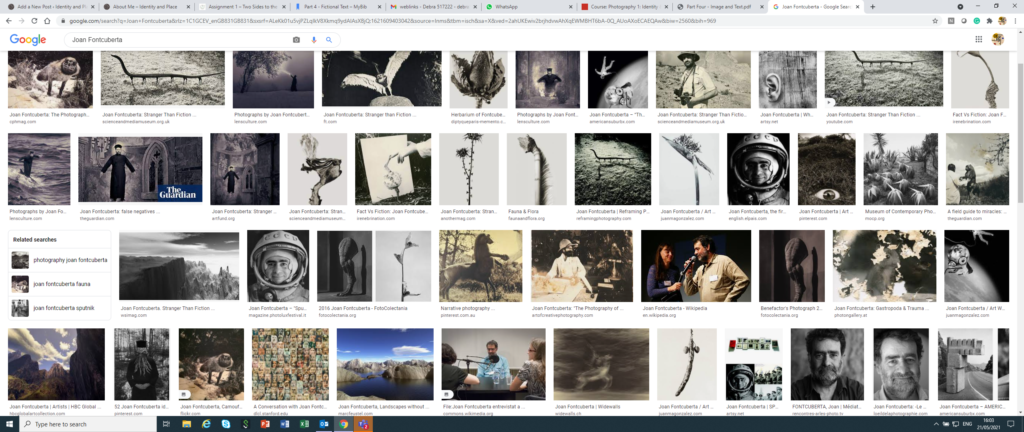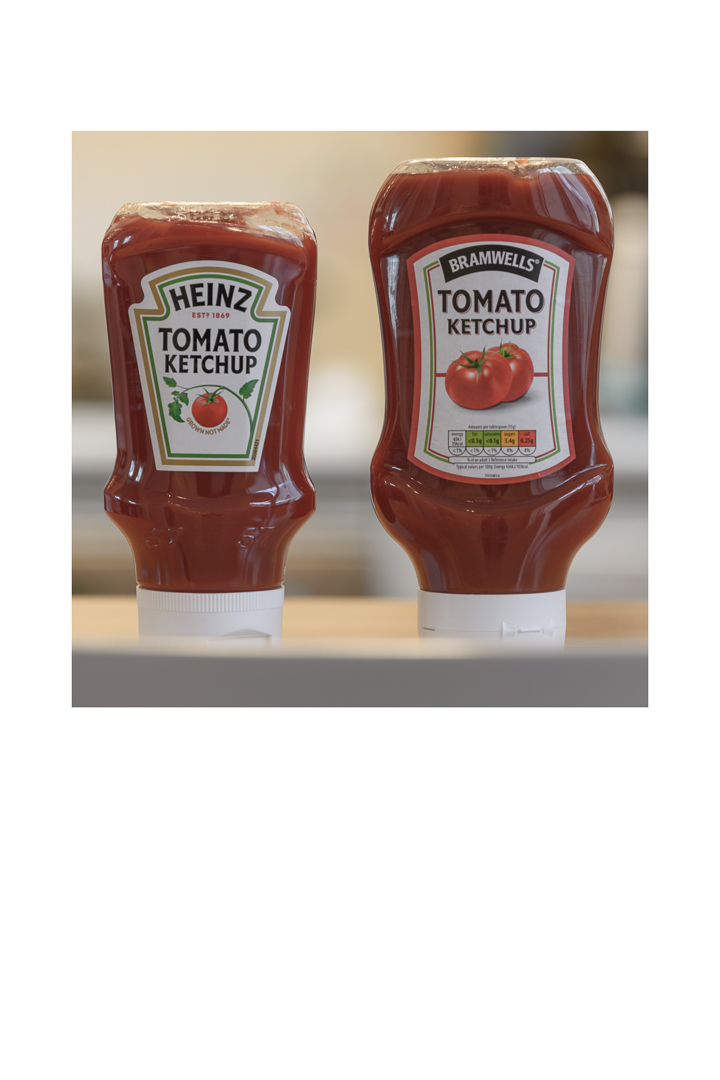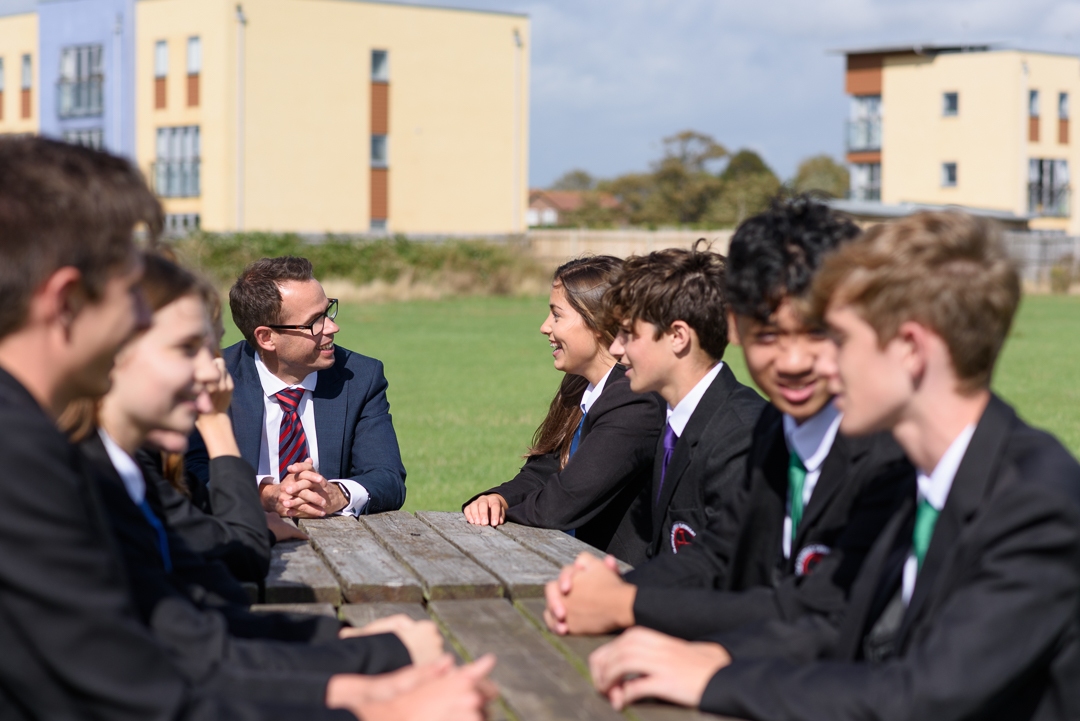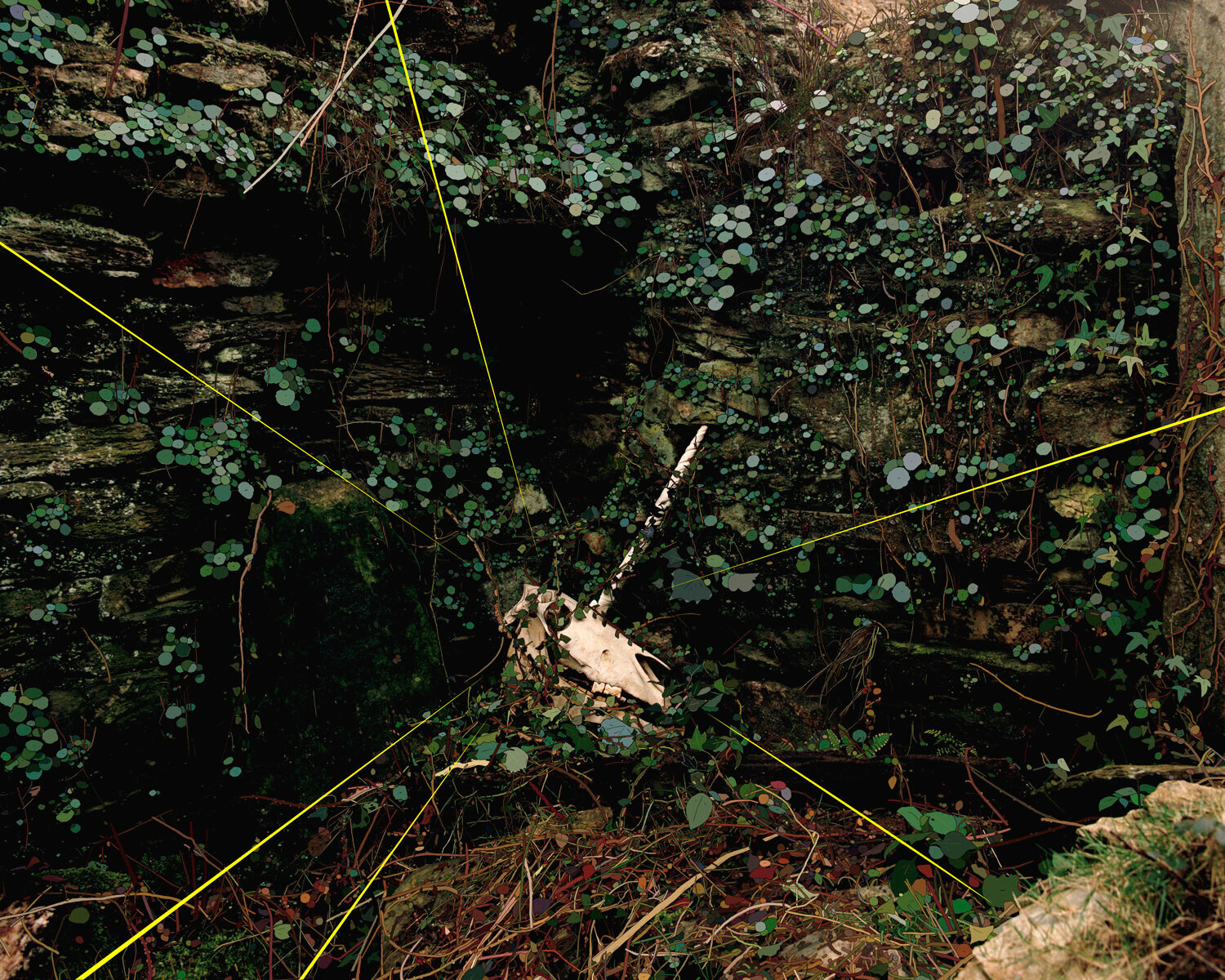. . . continuing the review of photographers and artists highlighted in the course book:
- Christian Patterson, ‘Redheaded Peckerwood’
- Joan Fontcuberta’s ‘Stranger Than Fiction’
Learning Points
- an air of mystery makes the series more interesting
- people like to work things out for themselves / solve a puzzle
- you can mix fact and fiction
- without context, people will assume reality
- fiction can be passed off as fact
- text and imagery can authenticate each other
Christian Patterson
Patterson is an American-born artist living in New York, his work is described as “conceptually grounded, narratively driven and visually layered” (LensCulture). He uses multiple disciplines, including photographs, paintings, objects, and video to subjectively describe historical events.
Redheaded Peckerwood is a series of images that tell the story of a pair of teenagers who went on a killing spree, killing 10 people in Nebraska USA.

It is lauded as a piece of photographic art and is an example of how archive images can be used alongside fictional images, text and artifacts to create an artistic view of a story. Patterson has used crime scene photos alongside artwork and images he has been inspired to make from reading
the story. The documentary style of the images presented in a book gives the impression of realism, but this is definitely a piece of subjective art. By that I mean it’s his interpretation. The viewer is left to work out what is fact or fiction and their relevance to the story. Each image is captioned, with a description of the image and a date between 2005 and 2010, no other information is given. The murders took place in 1958.
I can see how the work is/was innovative, however, I don’t think I get a sense of what (if anything) Patterson is trying to say. I read up on the story of Starkweather and Fugate as it wasn’t one I was aware of. To be honest, it was horrific. I think the series focuses directly on the killing spree itself and what happened along the way. Is he perhaps trying to depict what it might have been like to be involved in such an event? For me, the interest is in what drove a person to do such things at such a young age.
Joan Fontcuberta
“Joan Fontcuberta was born in 1955. He graduated from the Autonomous University of Barcelona in 1977. His early career was spent in advertising, but by the early 1980s his interests had shifted towards the use of photography as evidence and a carrier of the truth” (“Joan Fontcuberta: Stranger than Fiction”).
I read in Michael Colvin’s blog (Colvin, “A Partial Moment: Joan Fontcuberta – Stranger than Fiction”) that he had been greatly inspired by Fontuberta’s exhibition which he had visited in person. It gave him the idea to give an archival feel to his Rubber Flapper series. This made me very interested to see this work.
Fontcuberta’s work although fun and inventive also has a series point that asks us to question the ‘factualness’ of photography, museums, science, etc. We all know facts we have been taught at school etc have later been ‘proved’ to be incorrect by further study. His images are constructed to look real which is something that interests me greatly.
My Assignment 1 in Context and Narrative – Two Sides to the Story was an exploration of a similar idea in which I took images of corners around my town and merged some of them together, producing two sets of images, one ‘real’ and one ‘constructed’. I asked the viewer to decide which was which.

Historically, there was an assumption that ‘photos do not tell lies’, but any photographer knows that that has never been true, even in the days of dark rooms. In today’s world of smartphones, filters, and apps that change images in a second that’s ever more not true! It is mildly annoying that after years of learning photoshop, many things can now be done with an app!
If you couple the images with text and narrative it adds to the believability of the photo and vice versa. This section has asked us recognise the blurring between fact and fiction and how it can be used to great effect in photography.
Works Cited
—. “A Partial Moment: Joan Fontcuberta – Stranger than Fiction.” A Partial Moment, 8 Oct. 2014, apartialmoment.blogspot.com/2014/10/joan-fontcuberta-stranger-than-fiction.html. Accessed 21 May 2021.
Fontcuberta, Judit. “Joan Fontcuberta.” Www.fontcuberta.com, www.fontcuberta.com/#slide01. Accessed 21 May 2021.
“Joan Fontcuberta.” Wikipedia, 3 May 2021, en.wikipedia.org/wiki/Joan_Fontcuberta.
“Joan Fontcuberta: Stranger than Fiction.” National Science and Media Museum, Feb. 2015, www.scienceandmediamuseum.org.uk/what-was-on/joan-fontcuberta-stranger-fiction.
LensCulture, Joan Fontcuberta |, and Jim Casper. “Wait a Minute… – Photographs by Joan Fontcuberta.” LensCulture, www.lensculture.com/articles/joan-fontcuberta-wait-a-minute.
National Science and Media Museum. “Joan Fontcuberta: Stranger than Fiction Exhibition Trailer.” YouTube, 11 Nov. 2014, www.youtube.com/watch?v=m5zxDX77gho.
Patterson, Christian. “CHRISTIAN PATTERSON | Redheaded Peckerwood (2005-2011).” Www.christianpatterson.com, www.christianpatterson.com/redheaded-peckerwood-info/. Accessed 21 May 2021. the description that accompanies the images on the artists website.


